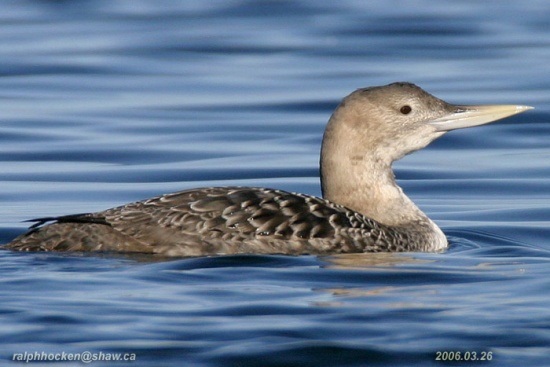
Gavia adamsii
TAXONOMY
Colymbus adamsii Gray, 1859, Alaska. Monotypic.
OTHER COMMON NAMES
English: White-billed diver; French: Plongeon a Bec Blanc;
German: Gelbschnabel-Eistaucher; Spanish: Colimbo de Adams.
PHYSICAL CHARACTERISTICS
30–36 in (76–91cm); 9.0–14.1 lb (4.1–6.4 kg). Largest loon, with
the largest bill. Very similar to the common loon in all plumages.
In alternate plumage, black upperparts, neck, and head; white
striping on the neck and white checkering on the back. Underparts
white. Juvenal, second alternate, and winter plumages similar,
dark gray brown upperparts, head, and nape; white
underparts and throat. Bill is large and upturned, yellow to ivory.
DISTRIBUTION
Replaces common loon in high arctic, breeds in Canada and
Alaska, also across Siberia. Winters along coasts in northern
Pacific, and along the coast of Norway. Winters farther north
than other loons.
HABITAT
Breeds in large tundra lakes; winters along coasts.
BEHAVIOR
Similar to the common loon.
FEEDING ECOLOGY AND DIET
Up-turned bill has been suggested as an adaptation for feeding
along water bottom; very little data on diet, probably similar to
other loons.
REPRODUCTIVE BIOLOGY
Nests from June to September on hummocks near breeding
ponds. Incubation around 28 days; young leave nest within
one day of hatching. Young can fly at about 11 weeks.
Predators include foxes (Aloplex), ravens (Corvus), and gulls
(Larus).
CONSERVATION STATUS
Rarest of the loons, but not threatened. Populations stable.
SIGNIFICANCE TO HUMANS
Taken occasionally for subsistence by Inuit.
Photo Gallery of - Yellow-billed loon
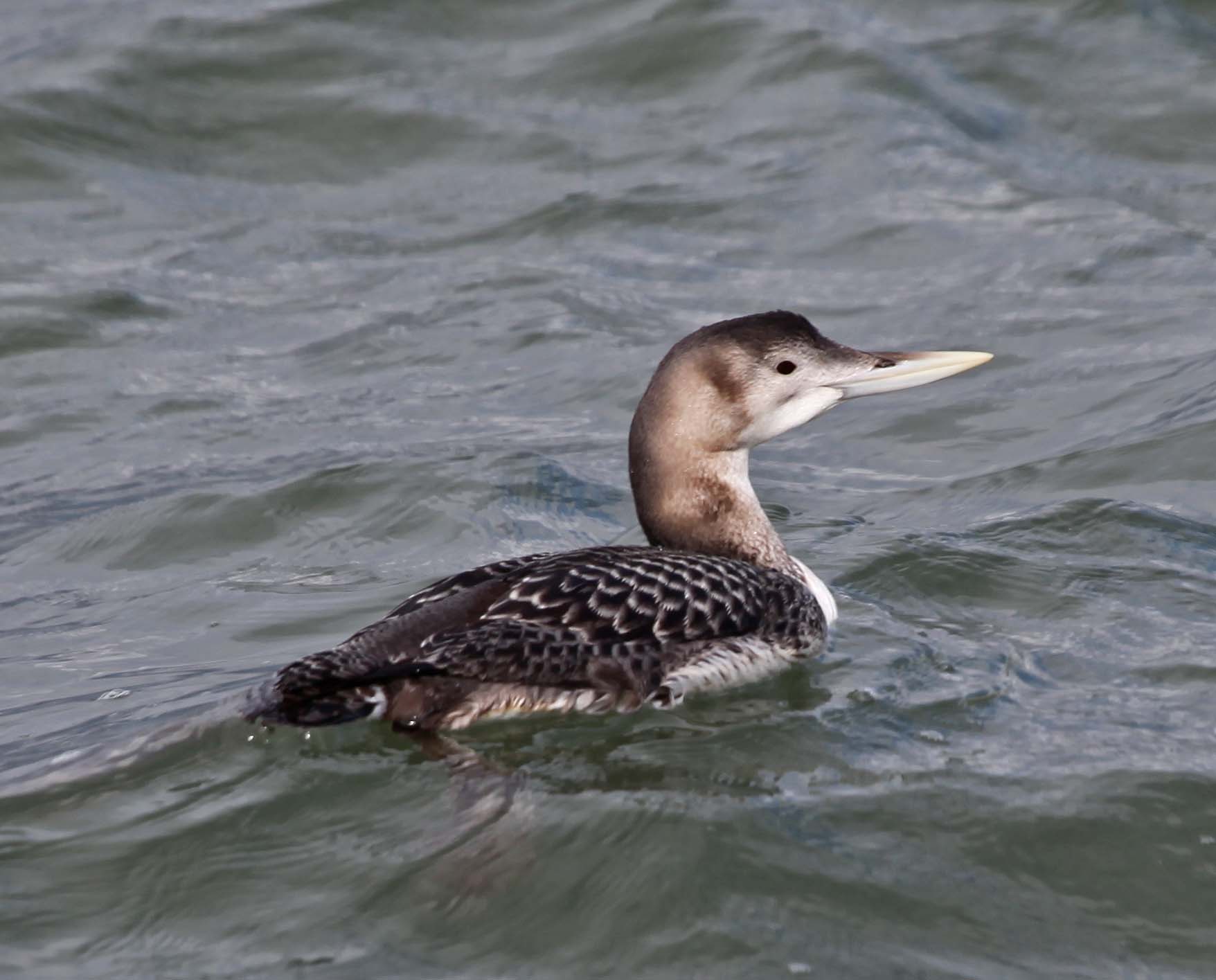
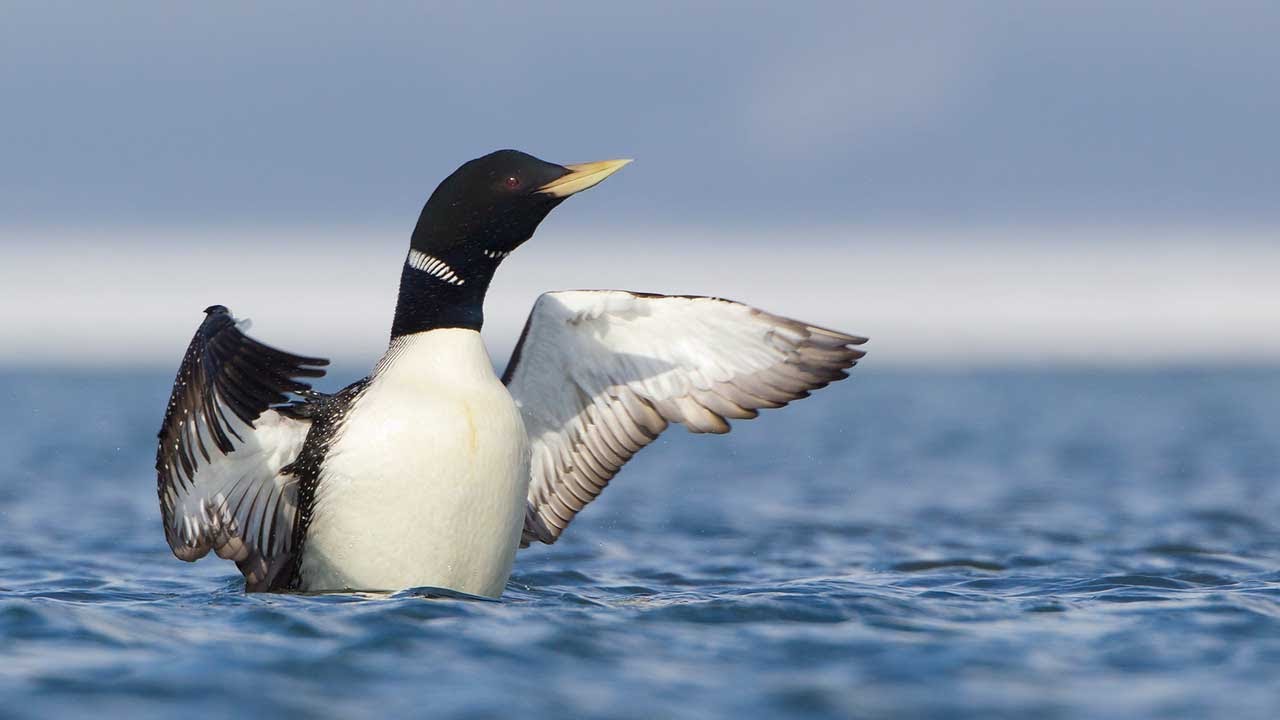
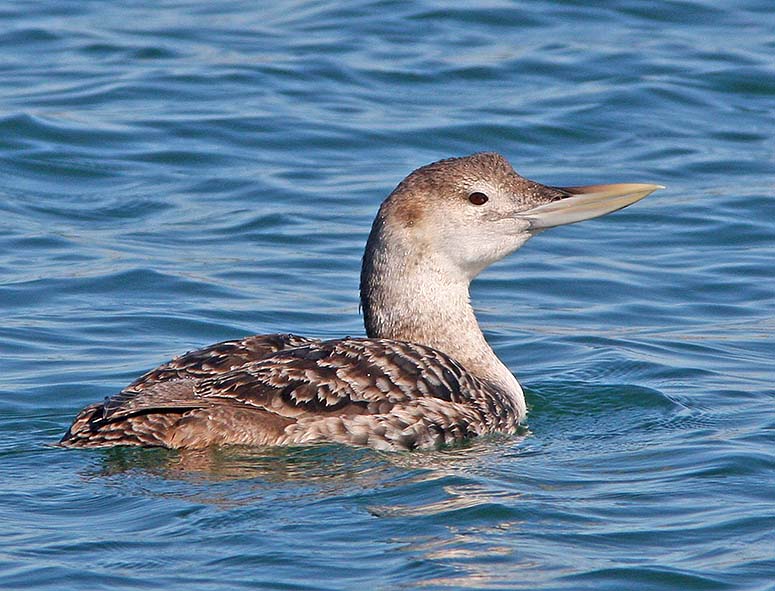
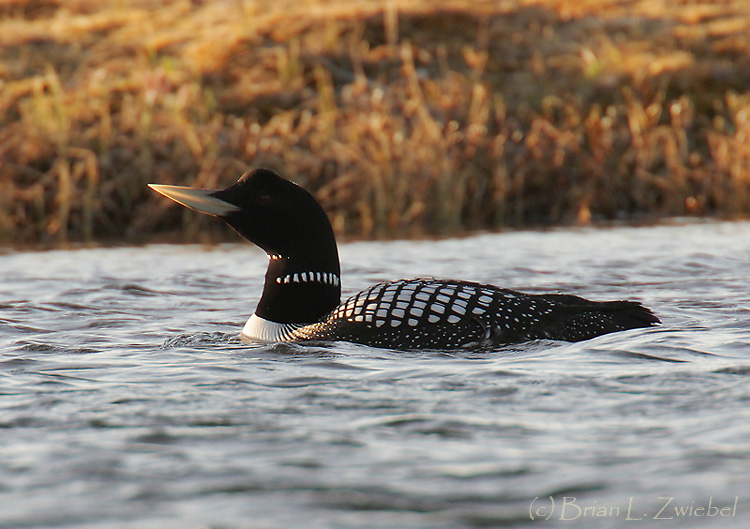
 Animalia Life
Animalia Life